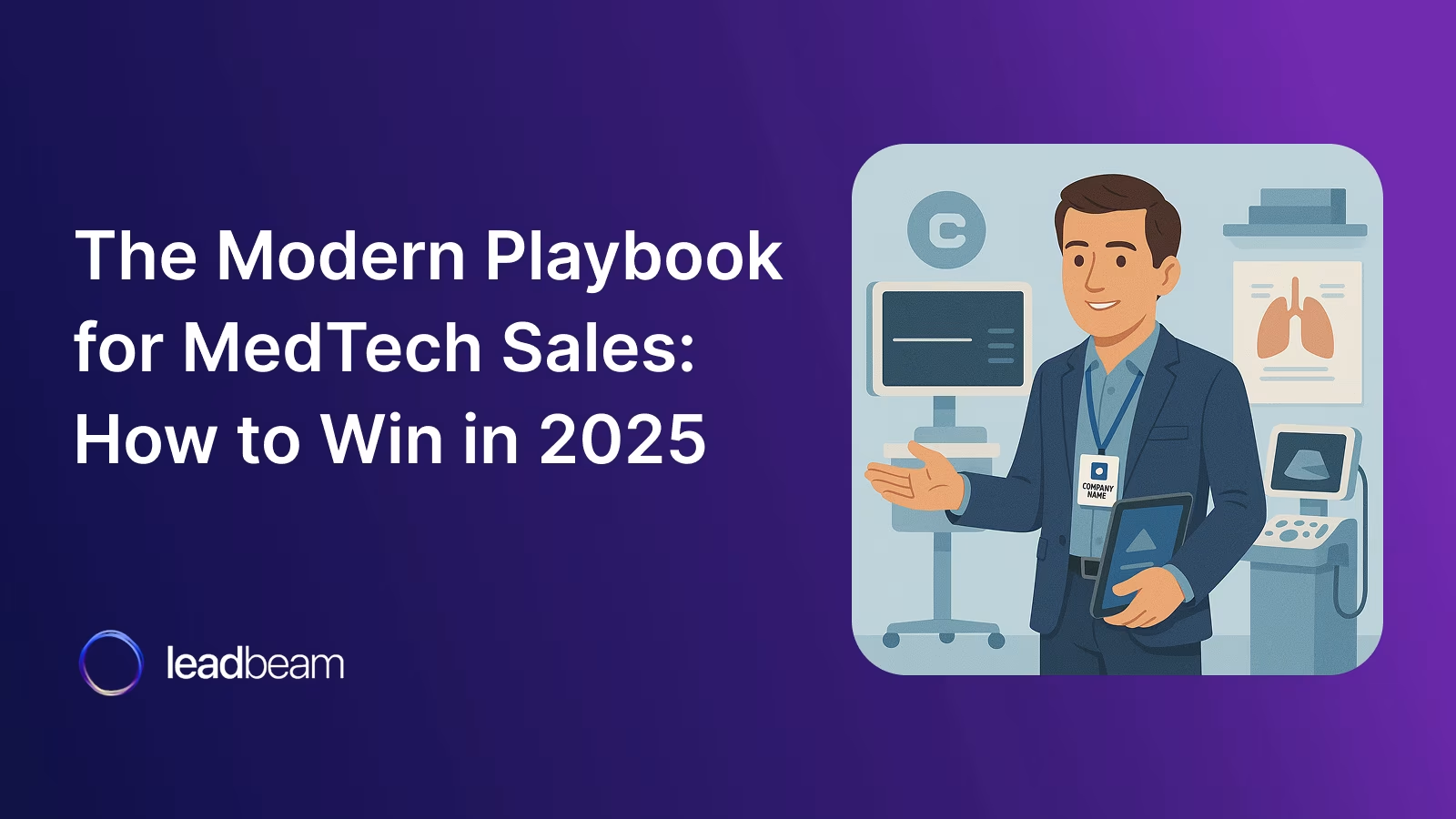
It’s 8 AM on Tuesday. You’re sitting in your car outside a hospital, a cup of coffee growing cold in your hand. Your first meeting, a 15-minute slot with a key surgeon you've been chasing for six weeks, was just canceled via email. Your top champion at another facility just told you all purchasing decisions now go through a mysterious 'Value Analysis Committee' that meets quarterly. Meanwhile, your CRM, loaded on your laptop on the passenger seat, feels completely disconnected from the reality of your day-to-day grind.
If this scenario feels uncomfortably familiar, it’s because the very ground beneath the world of MedTech sales has shifted. The traditional playbook of relationships and routine visits is no longer enough to navigate the maze of modern healthcare systems. This isn't just a matter of increased difficulty; it's a fundamental change in how B2B healthcare sales are won and lost. Success now demands a new level of strategic rigor, financial acumen, and operational precision.
This guide is your new playbook. It’s designed to replace frustration with a framework, providing the modern medtech sales strategy and healthcare technology sales tactics needed to not just survive, but to thrive in this complex new environment.
To build a winning strategy, you must first understand the forces reshaping the industry. The ground has shifted beneath our feet, driven by three key trends that have permanently altered the sales process.
This is the single most significant change impacting B2B healthcare sales. Historically, hospitals were paid for the volume of services they provided (fee-for-service). Today, reimbursement is increasingly tied to the quality and efficiency of care (value-based care). This means your sales conversation must evolve from product features to patient and system outcomes.
You must understand concepts like the Hospital Readmissions Reduction Program (HRRP), which penalizes hospitals for high rates of patient readmissions. If your technology can be proven to keep patients healthier and out of the hospital post-discharge, that is a powerful, quantifiable value proposition that resonates far beyond the clinical department.
The era of a single surgeon championing your product to adoption is over. Now, you must navigate the Value Analysis Committee (VAC), a multidisciplinary team designed to scrutinize every new purchase. To succeed, you must understand each member's unique motivations:
Motivation: Improved patient outcomes, clinical efficiency, ease of use, personal and departmental reputation.
Language: Speaks in clinical data, patient case studies, and peer-reviewed literature.
Motivation: Throughput, operational efficiency, staff satisfaction, patient satisfaction scores (HCAHPS).
Language: Speaks in workflows, staffing ratios, procedure times, and competitive advantages.
Motivation: Total cost of ownership, ROI, contract terms, alignment with budget, cost-per-procedure.
Language: Speaks in spreadsheets, financial models, and capital expenditure vs. operational expenditure.
Motivation: Data security, HIPAA compliance, interoperability with the existing EHR/EMR system.
Language: Speaks in encryption standards, API integrations, and data governance protocols.
A winning medtech sales strategy requires a unique value proposition for each of these personas, delivered at the right time in the sales cycle.
Clinicians now operate within a deeply integrated digital ecosystem. Your sales process must exist within this framework, not outside of it. EHRs like Epic and Cerner are the central nervous system of the modern hospital. If your healthcare technology sales process ignores this, you will be perceived as archaic. This means understanding how your technology will interact with their existing systems, how data will be shared, and how you can support clinicians who are already facing significant digital fatigue.
A successful strategy in this new environment is built on four key pillars that transform your team from product vendors into indispensable strategic partners.
In a complex sales environment, research shows that the most successful reps don't just build relationships; they actively challenge their customers' thinking.
This approach repositions you from a salesperson to a strategic advisor.
Large health systems (IDNs) are the biggest players in the market. A successful medtech sales strategy must be built around how they operate. This often involves a dual-pronged "top-down, bottom-up" approach.
Juggling both plays requires meticulous organization and a clear understanding of who holds the power for different types of decisions within the network.
Top-performing reps don't manage their territory by intuition; they manage it with data.
Every clinical claim must be supported by a financial argument. Build a clear Economic Value Proposition (EVP) for your key products.

Having this framework ready for conversations with hospital administrators and finance teams is a game-changer.
A brilliant strategy is useless without the right tools to execute it in the field.
You must shift the conversation from cost to value. A higher upfront cost is justifiable if you can prove it leads to greater long-term savings, improved efficiency, or better patient outcomes that align with the hospital's value-based care goals. A robust ROI analysis is your most powerful tool.
Beyond deep clinical knowledge, the top skills are business acumen, data literacy, and adaptability. Reps need to understand the financial drivers of a health system and be comfortable using data to build their case. They must be able to adapt their approach to a wide variety of stakeholders, from surgeons to CFOs.
The key is ruthless prioritization and efficiency. A field sales platform is essential for this. It allows reps to visually segment their territory, plan the most efficient routes to cover high-priority accounts, and minimize wasted "windshield time," freeing up more hours for actual customer engagement.
The future of MedTech sales belongs to the prepared, the data-driven, and the agile. The strategies outlined in this playbook aren't just incremental improvements; they represent the new standard for survival and growth in a rapidly evolving industry. By transforming your team from product pitchers into valued strategic partners, you’re not just selling innovative technology—you’re building a resilient, high-performance engine for long-term success. The time to modernize your approach is now.
Ready to equip your MedTech sales team with the tools to execute this playbook in the field? Discover how Leadbeam can help.
Leadbeam Blog
Discover tips, strategies, and success stories to empower your field sales team and drive results.